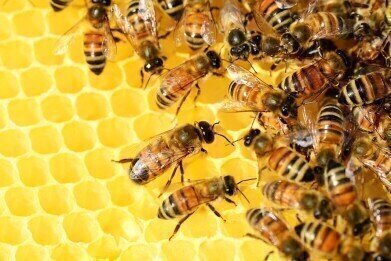Environmental Laboratory
Bees Are Suffering from a Virus of Their Own, Scientists Find
May 22 2020
While the human race may be preoccupied with finding ways to tackle the spread of coronavirus and minimise the death toll caused by this devastating pandemic, it seems that the bee world has been battling its own viral crisis for over a decade. A study undertaken by the University of Newcastle has discovered that the number of colonies in the UK crippled by chronic bee paralysis increased exponentially between 2007 and 2017.
As the name suggests, the virus manifests itself in shaking limbs and an inability to fly, with most infected bees dying within a few days of contracting the disease. What’s more, the research suggests that colonies which have an imported queen bee at their head are twice as likely to suffer from the virus than others, meaning it may well have its origins overseas.
Concerning conclusions
The study, published in the journal Nature Communications, was carried out by the School of Natural and Environmental Sciences at the University of Newcastle, in conjunction with the Bee Farmers’ Association and the National Bee Unit of the Animal and Plant Health Agency.
In order to arrive at their conclusions, lead author Professor Giles Budge and his team analysed data collected by 24,000 beekeepers across England and Wales between 2007 and 2017. They found that chronic bee paralysis was only found in colonies in the county of Lincolnshire at the beginning of their research period, but by the end, had spread to 39 of the 47 regions tested.
Additionally, the research analysed data collected from 130,000 honeybee imports from 25 countries around the world. Queen bees lead colonies and apiarists often import replacement queens from abroad in the event of a shortage. The study showed that those colonies which were headed up by an imported queen were almost twice as likely to have been affected by the virus.
A species under siege
It’s not yet known how chronic bee paralysis virus (CBPV) is transmitted or where it originated, although the findings suggest it may have come from overseas. It manifests itself in inhibiting the movement and flight of the sufferers, as well as causing their hair to fall out. Death normally follows inside a week, meaning whole colonies can be completely wiped out once one member becomes infected.
The bee population in Britain and Europe has been in decline for many years now, with this virus just one of the contributing factors. Intensive agriculture has destroyed many bees’ natural habitat and disrupted their feeding patterns, while the use of pesticides and other harmful chemicals has also taken its toll.
Fortunately, the most damaging strain of these pesticides, known as neonicotinoids, was finally banned by the EU in May 2018, though the damage may have already been done to ailing bee populations across the continent. Given that they have been battling a deadly virus at the same time, it’s little wonder that their numbers are in such sharp decline.
Digital Edition
IET 34.2 March 2024
April 2024
Gas Detection - Biogas batch fermentation system for laboratory use with automatic gas analysis in real time Water/Wastewater - Upcycling sensors for sustainable nature management - Prist...
View all digital editions
Events
Apr 30 2024 Melbourne, Australia
Apr 30 2024 Birmingham, UK
May 03 2024 Seoul, South Korea
May 05 2024 Seville, Spain
May 06 2024 Minneapolis, MN, USA


















